
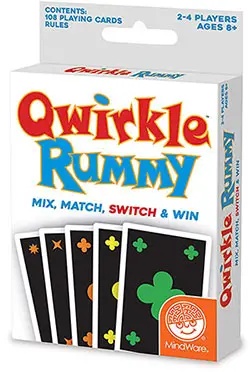
Components
- 108 playing cards: 3 of each of the thirty-six cards shown at right
- Rulebook
Object of the Game
The object of the game is to make the most Qwirkles.
A Qwirkle is a run of 6 cards that are either all the same shape or all the same color, without any duplicates.
Setup
Shuffle the cards thoroughly. Deal 9 cards to each player. Put the remainder of the deck to one side of the play area. The player with the largest set of cards that are all one shape or all one color, without duplicates, goes first. If there is a
tie, the oldest player in the tie goes first. The first player does NOT have to play his or her largest set. Play continues clockwise. If none of the players has a set of at least 3 cards to start the game, all the cards are reshuffled and dealt again.
Game Play
On your turn you will:
- Play cards.
- Switch cards if needed.
- If you make a Qwirkle, take it out of the play area.
- Draw to return your hand to 9 cards.
Playing Cards
On your turn you must play at least one card. You can start a new set, add to an existing set, or switch cards to make new sets. You can do more than one of these things on your turn.
For example, you can start a new set and also add a card to an existing set. Or you can add cards to several existing sets. A set consists of at least 3 cards that share one attribute, either color or shape.
There cannot be duplicate cards in a set. For example, a set of squares cannot have 2 red squares in it. To start a new set, play at least 3 cards that share a single attribute, without duplicates.
Note: The illustrations below shows the play area after several turns. It works well to have one row for shape sets and one row for color sets.
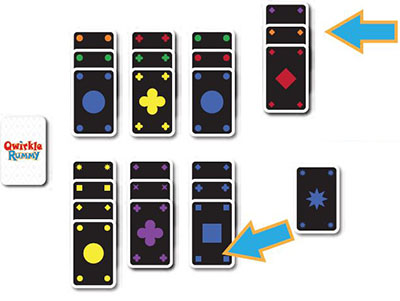
Chris plays 3 diamonds to start a new set.
He also adds a blue star to the blue set.
To add to an existing set, the cards you add must have the same attribute as all the cards in the existing set, and there cannot be duplicates.
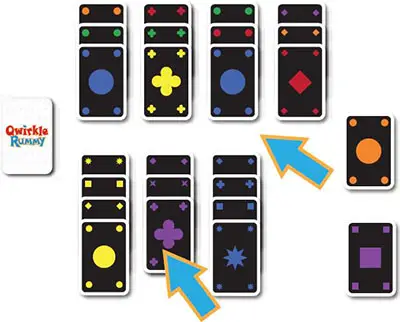
Sally plays an orange circle. She adds it to the circle set that doesn't already have an orange circle.
She also plays a purple square. She adds it to the purple set.
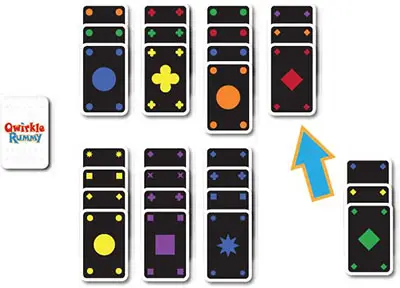
George plays 3 diamonds. He adds them to the diamond set and makes a diamond Qwirkle!
At the end of his turn, the Qwirkle is removed from the play area. George sets it in a stack near him so he can count his Qwirkles at the end of the game.
To switch cards around, add your card or cards to the play area and then rearrange, combining cards that are already in the play area with the cards you played. When you are finished switching, all the cards in the play area must belong to a set of at least 3 cards.
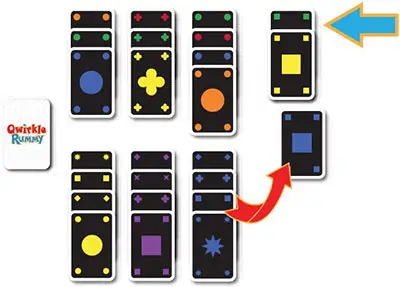
Chris plays 2 squares. He then switches the cards in the play area. He moves the blue square from the blue set and adds it to his 2 squares to make a square set.
Note: If you're doing some complex switching, you may want to switch the cards in the play area before you play cards from your hand.
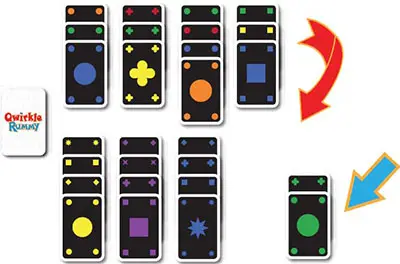
Sally plays the green diamond and the green circle. Then she moves the square from green to complete her run of three.
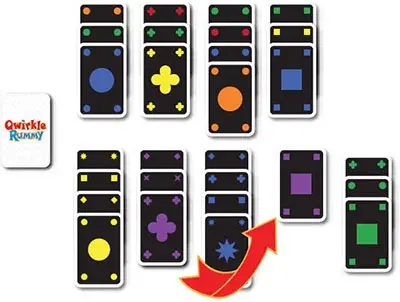
Finally to maintain the square set, Sally moves the purple square from the purple run.
As well as rearranging cards to make sets, you can also rearrange cards to make a Qwirkle.
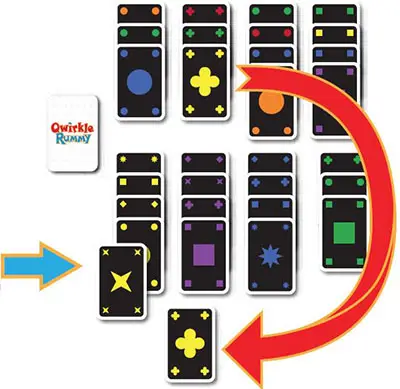
First George plays a yellow X from his hand
Then George moves the yellow clover from the clover set to the yellow set. He makes a yellow Qwirkle!
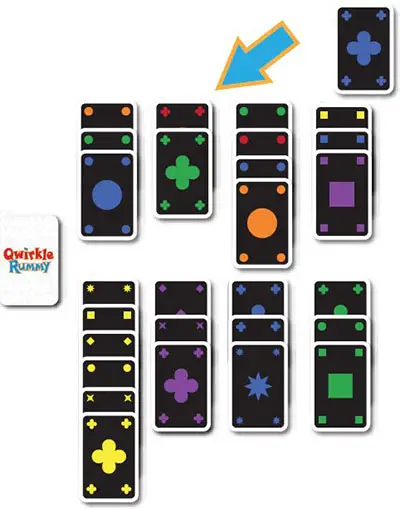
Finally, George plays a blue clover to the clover set so that there are 3 cards in that set.
When he is finished with his turn, George removes the yellow Qwirkle from the play area and sets it near him.
Making a Qwirkle
Whenever you make a Qwirkle, remove the Qwirkle from the play area. Set the cards to your side so that you can count how many Qwirkles you made at the end of the game.
All players are allowed to look at the completed Qwirkles at any point in the game. If you find you need to refer to them often, you may want to fan them out so that they can be easily seen.
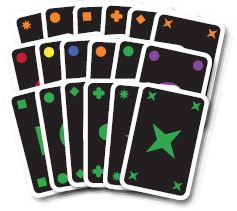
You may want to display your Qwirkles like this.
It makes it easy for players to see how many Qwirkles you have and what cards have been played.
Drawing
At the end of your turn, draw until you have 9 cards in your hand.
End of the Game
When the last card is drawn, each player gets one more turn. The player who drew the last card will have the last turn.
The player with the most Qwirkles wins the game.
If there is a tie, the tied players shake hands and agree to a rematch in the future.
Continue Reading


